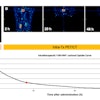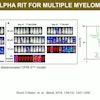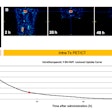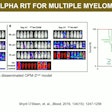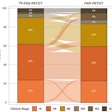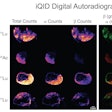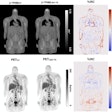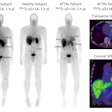TORONTO – The radiopharmaceutical Pluvicto improves progression-free survival in patients with metastatic prostate cancer who haven’t undergone taxane therapy, according to research presented at the SNMMI meeting.
 Oliver Sartor, MD
Oliver Sartor, MD
The study, which was awarded SNMMI’s Abstract of the Year award, shared data from the phase III PSMAfore trial. Its results could pave the way for earlier use of the radioligand therapy in the treatment of these patients.
“This is a potentially practice-changing trial,” said Oliver Sartor, MD, a medical oncologist and director of radiopharmaceutical trials at the Mayo Clinic in Rochester, MN. He presented the abstract on behalf of first author Ken Herrmann, MD, chair of nuclear medicine at the University Hospital Essen in Essen, Germany.
In the PSMAfore trial, researchers aimed to assess the benefit of lutetium-177 (Lu-177) prostate-specific membrane antigen-617 (PSMA-617) in patients with metastatic castration-resistant prostate cancer (mCRPC) who have never received taxane-based chemotherapy. The study included 468 taxane-naive mCRPC patients who were PSMA-positive on gallium-68 PSMA-11 PET/CT imaging and candidates for an androgen receptor pathway inhibition (ARPI) therapy change after one progression on prior ARPI therapy.
The researchers randomly assigned patients to receive one of two treatments: Lu-177 PSMA-617 (7.4 GBq ± 10% once every six weeks for six cycles) or a change in ARPI to abiraterone or enzalutamide. Radiographic progression-free survival (rPFS) was the primary endpoint of the study, while overall survival was the key secondary endpoint. They also evaluated PSA decline of 50% or more from baseline (PSA50), health-related quality of life, and safety. Primary data analysis was performed at 7.3 months, with a second interim analysis performed again at 15.9 months.
| Improved outcomes from Lu-177 PSMA-617 treatment | ||
|---|---|---|
| Measure |
ARPI therapy change group |
Lu-177 PSMA-617 group |
| Primary analysis | ||
| Median rPFS at primary analysis |
5.55 months |
9.3 months (hazard ratio = 0.41) |
| Secondary analysis | ||
| Median time to worsening in FACT-P total score |
4.27 months |
7.46 months |
| Objective response rate |
14.9% | 50.7% |
| PSA50 response |
20.4% |
57.6% |
| Median time to PSA progression |
4.24 months |
10.55 months |
The researchers noted that rPFS results were similar for both groups in the second interim analysis. The hazard ratio was 0.43 at the second interim analysis (p < 0.0001).
In other findings, the researchers reported that the Lu-177 PSMA-617 group had fewer incidents of grade >3 adverse events in the second interim analysis than for the ARPI change group. The most common groups of any-grade treatment-emergent adverse events in the Lu-177 PSMA-617 group were dry mouth and myelosuppression, resulting in anemia, thrombocytopenia, and neutropenia.
“This is really a critical presentation from my perspective about the importance [of nuclear medicine] in multidisciplinary care,” Sartor said. “It not only takes a lot of expertise on the medical front, patients and their families, and sponsors to make this type of research possible.”
Trial sponsor Novartis, which produces Pluvicto, now plans to apply to the U.S. Food and Drug Administration in the second half of 2024 for a label expansion for use in the pre-taxane setting, according to the SNMMI.
Click here for our full SNMMI coverage.


